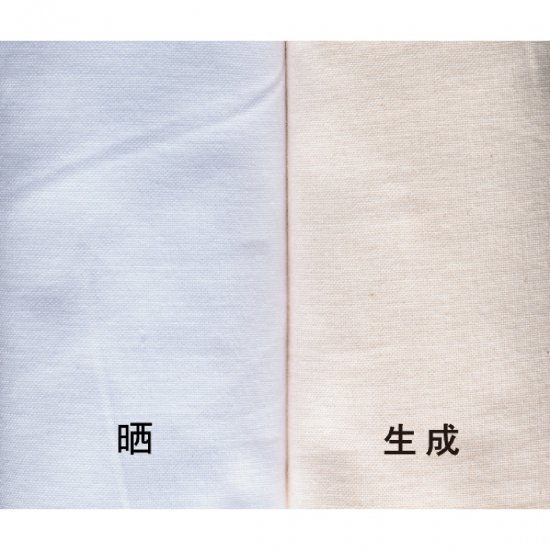
“伊勢木綿”について
伊勢参宮のみやげに津の街道で名物の一つとして売られたり、江戸から戦前まで日常着として全国の人々に愛用されるなどして、当時の伊勢商人達の経済的基盤をつくった伊勢木綿。戦後、化学繊維の発展や広幅生地の台頭で伊勢木綿の需要は激減し、現在では作り手が臼井織布一社となりました。
伊勢木綿は、明治時代に倉敷紡績が開発した「三馬」というブランドの単糸を使用しています。切れやすい単糸をゆっくりゆっくり織り上げるので、生地もふんわり空気を含んだ仕上がりになります。
さらに、使っていくうちに糸が綿(わた)に戻ろうとしてどんどん生地が柔らかくなっていくという特徴を持っています。これが一番感じられる生地が手ぬぐい地・文(ぶん)。一般の手ぬぐいは洗えば硬くなるのに対し、文は洗えば洗うほどふわふわになり、ガーゼのような肌触りになります。
About ‘Ise-momen (Ise Cotton)’
Ise-momen is a textile sold as a famed souvenir in the city streets of Tsu for travelers making their way to pay respects at the Ise Shrine, while it was also widely used as an everyday garment in the days of the Edo period leading up to World War II. In those days, Ise-momen served as the economic cornerstone for Ise’s craftsmen. Following the end of the war, demand for Ise-momen rapidly diminished due to the development of synthetic fibers and the rise of wide-width cloth, resulting a downsizing in production; now, Ise-momen production has minimized and is now handled exclusively by one firm—Usui Orifu. Ise-momen utilizes a single yarn variant developed by KURABO INDUSTRIES, LTD. in the Meiji Period known as ‘mitsu-uma.’ Through slowly and gradually weaving these easy-to-cut yarn threads, the overall textile comes to take on a soft, air-filled composition.
Additionally, this form of textile is known for how the threads gradually return to their original, cotton-like state, leading to the garment itself progressively growing softer over time and use. One can most easily feel this sensation for themselves in using Ise-momen as a fabric (known as ‘Bun’) for use in making hand towels. As opposed to conventional hand-towels, which tend to harden as you repeat the washing process, ‘bun’-made hand-towels grow softer as you wash, and have a gauze-like texture.
つくっているところ
臼井織布株式会社
昭和24年設立。江戸時代は紺屋を、明治に入り織物業も兼ねて商売を始め、初代が豊田織機を購入したのは明治20年。現在は9代目社長が技を受け継ぎ、日々豊田織機を動かしています。
Where It’s Made
Usui Shokufu Co., Ltd.
First established in year 24 of the Showa era (1949). Originally beginning as a dyer in the Edo period, Usui Shokufu also expanded into the textile industry starting from the Meiji era. The first president of the firm bought a Toyota Shokki loom in the Meiji era’s 20th year. Its 9th generation president, who leads the company in present day, has inherited the techniques of previous generations and continues to engage in the day-to-day application of Toyota Shokki looms.
おすすめのつかいかた
洗う度に綿に戻っていく伊勢木綿。製品染めか製品洗い加工で生地の風合いがより引き立ちます。
Recommended Uses
Ise-momen is a fabric that gradually gets softer as you wash it—as such, the feel of this fabric best makes itself known when utilized in the processes of product dying and product washing.

